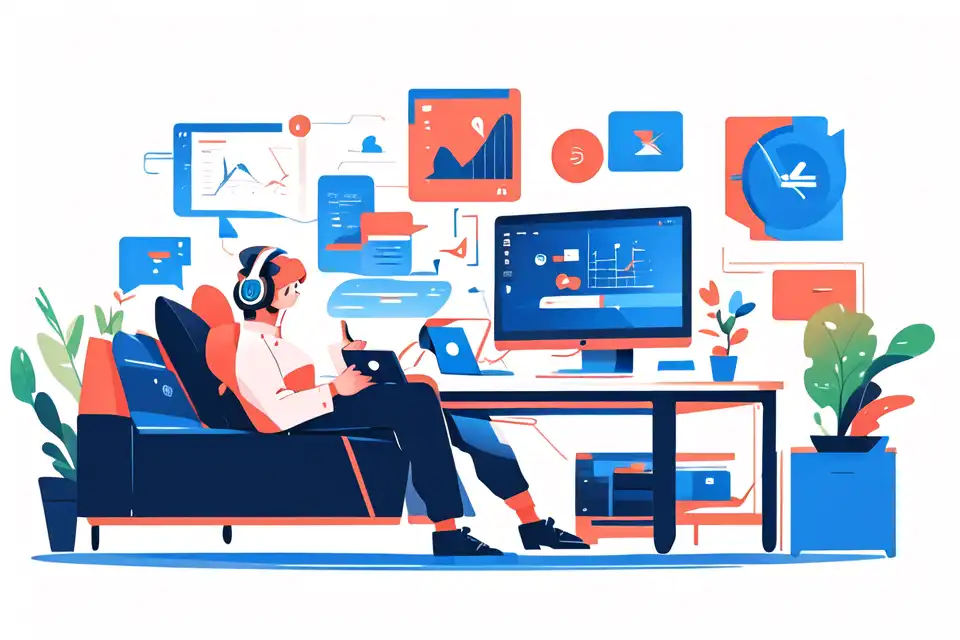Content Personalization Techniques
Learn about the top tips and strategies in content personalization techniques.
Try Lark for Free
In the modern digital landscape, personalization has become a cornerstone of successful marketing strategies. This article will delve into the world of content personalization techniques, exploring its relevance and power in the current digital marketing ecosystem. We will discuss the role of these techniques in digital strategies and customer engagement, share insight on implementing them effectively, and highlight emerging trends.
"Unlock the power of Lark to elevate your business operations. Discover actionable strategies and best practices in our comprehensive guide."
Decoding content personalization techniques
Content personalization techniques are methods that marketers use to deliver individualized content to their audience, usually tailored based on user behavior, demographics, and preferences. In today's digital landscape, these techniques play a pivotal role as they help businesses stand out in an increasingly crowded market, engage their audience more effectively, and drive better results from their marketing efforts.
The impact of content personalization techniques on digital strategies and customer engagement
Incorporating content personalization techniques into digital strategies can significantly enhance customer engagement. These techniques allow businesses to deliver relevant content to their audience, which can lead to increased customer satisfaction, loyalty, and ultimately, higher conversion rates. According to a study by McKinsey, personalization can deliver five to eight times the ROI on marketing spend and lift sales by 10% or more.
Learn more about Lark can help you with everything mentioned in the article.
Implementing content personalization techniques: a guide
Successful implementation of content personalization requires a well-planned strategy. Here are some crucial steps that marketers can follow:
- Understand your audience: Conduct thorough market research to identify your target audience's preferences, needs, and behaviors.
- Collect and analyze data: Use analytics tools to gather data about your audience and analyze it to gain insights.
- Create personalized content: Use the insights to create content tailored to your audience's preferences and needs.
- Test and optimize: Regularly test and optimize your content to ensure it continues to resonate with your audience.
Technological aspects of content personalization techniques
Several tools, platforms, and technologies can facilitate content personalization. Artificial Intelligence (AI) and Machine Learning (ML) are particularly powerful as they can analyze vast amounts of data and deliver personalized content at scale. Integrating these technologies with existing marketing systems and analytics can help businesses deliver more effective personalized content.
Learn more about Lark can help you with everything mentioned in the article.
Learning from success: case studies in content personalization techniques
Several organizations have leveraged content personalization techniques to drive successful marketing campaigns. For instance, a global retail brand used personalization techniques to tailor their website content based on visitor demographics and behavior, resulting in a 20% increase in sales. This case illustrates the potential of content personalization techniques when implemented effectively.
Overcoming challenges in content personalization techniques
Despite the benefits, content personalization techniques also present some challenges. These include content saturation, measuring ROI, and maintaining privacy and ethics while collecting and using customer data. However, these challenges can be mitigated by adopting best practices, leveraging the right tools, and cultivating a customer-centric approach.
Learn more about Lark can help you with everything mentioned in the article.
Preparing for the future: trends and developments in content personalization techniques
Emerging technologies such as AI, VR/AR are shaping the future of content personalization. Businesses need to keep pace with these developments and adapt their content personalization strategies accordingly.
Conclusion
As the digital landscape continues to evolve, content personalization techniques will remain a critical component of successful digital strategies. By embracing these techniques, businesses can enhance customer engagement, drive better marketing ROI, and stay ahead in the competitive market.
Learn more about Lark can help you with everything mentioned in the article.
Faqs about content personalization techniques
-
What is content personalization and why is it important? Content personalization is the process of delivering individualized content to users based on their preferences, behavior, and demographics. It's important as it enhances customer engagement, drives better marketing ROI, and helps businesses stand out in a crowded market.
-
How can content personalization techniques be integrated into a digital marketing strategy? Content personalization techniques can be integrated into a digital marketing strategy by understanding the audience, collecting and analyzing data, creating personalized content, and regularly testing and optimizing the content.
-
What are some common challenges in implementing content personalization techniques, and how can they be overcome? Common challenges include content saturation, measuring ROI, and maintaining privacy and ethics while collecting and using customer data. These can be overcome by adopting best practices, leveraging the right tools, and cultivating a customer-centric approach.
Do's and don'ts of content personalization techniques
| Do's | Don'ts |
|---|---|
| Do use data-driven insights | Don't ignore customer feedback |
| Do test and optimize | Don't overlook privacy concerns |
| Do use the right tools | Don't underestimate the importance of integration |
"Unlock the power of Lark to elevate your business operations. Discover actionable strategies and best practices in our comprehensive guide."








